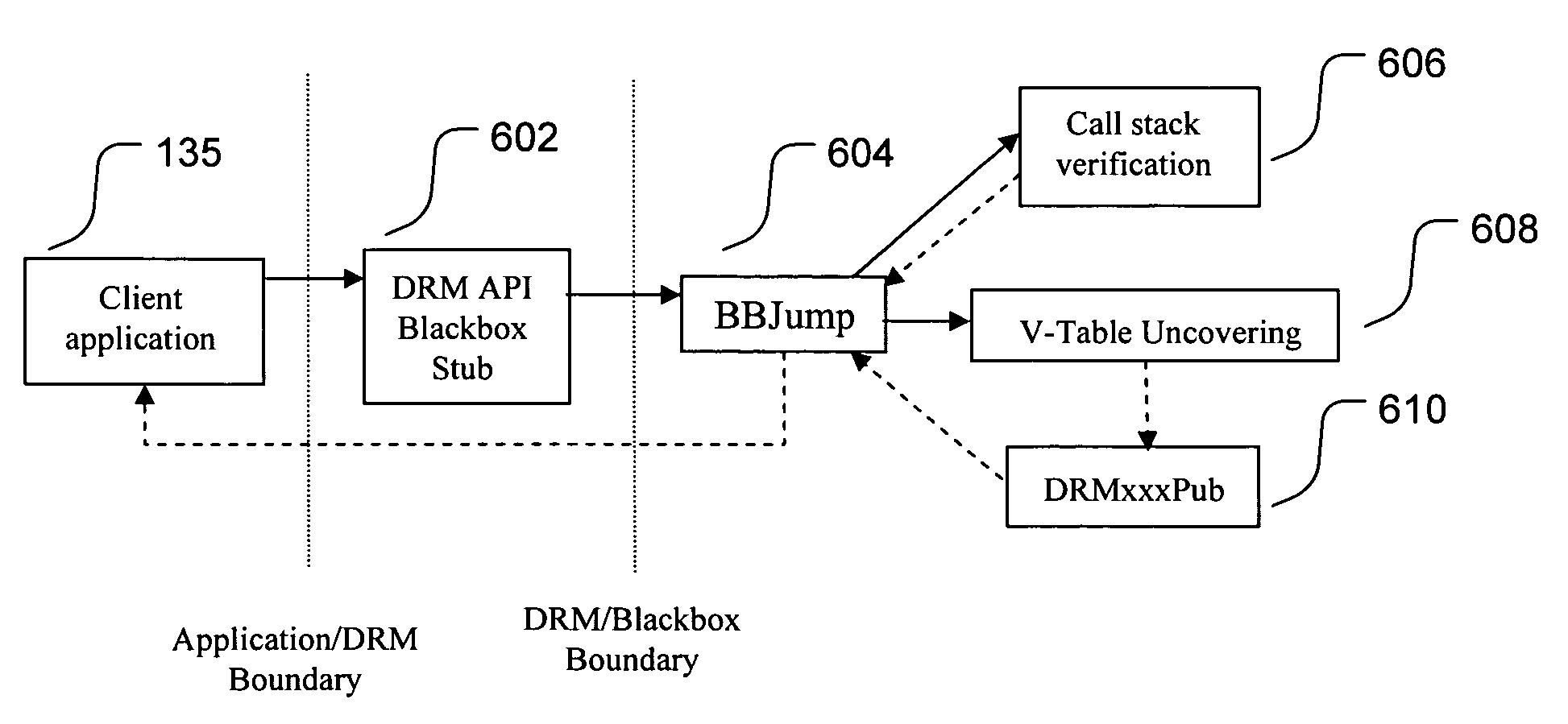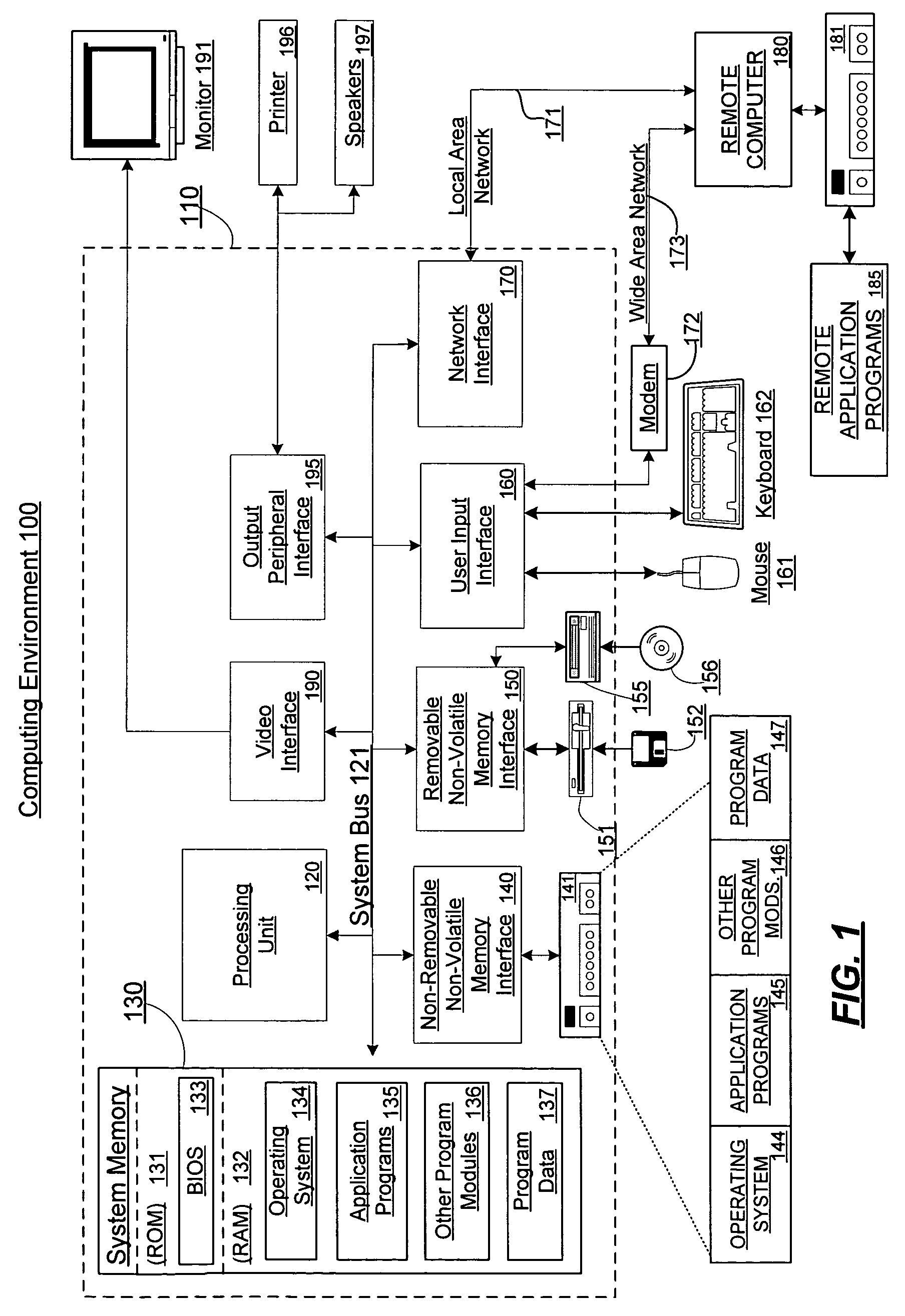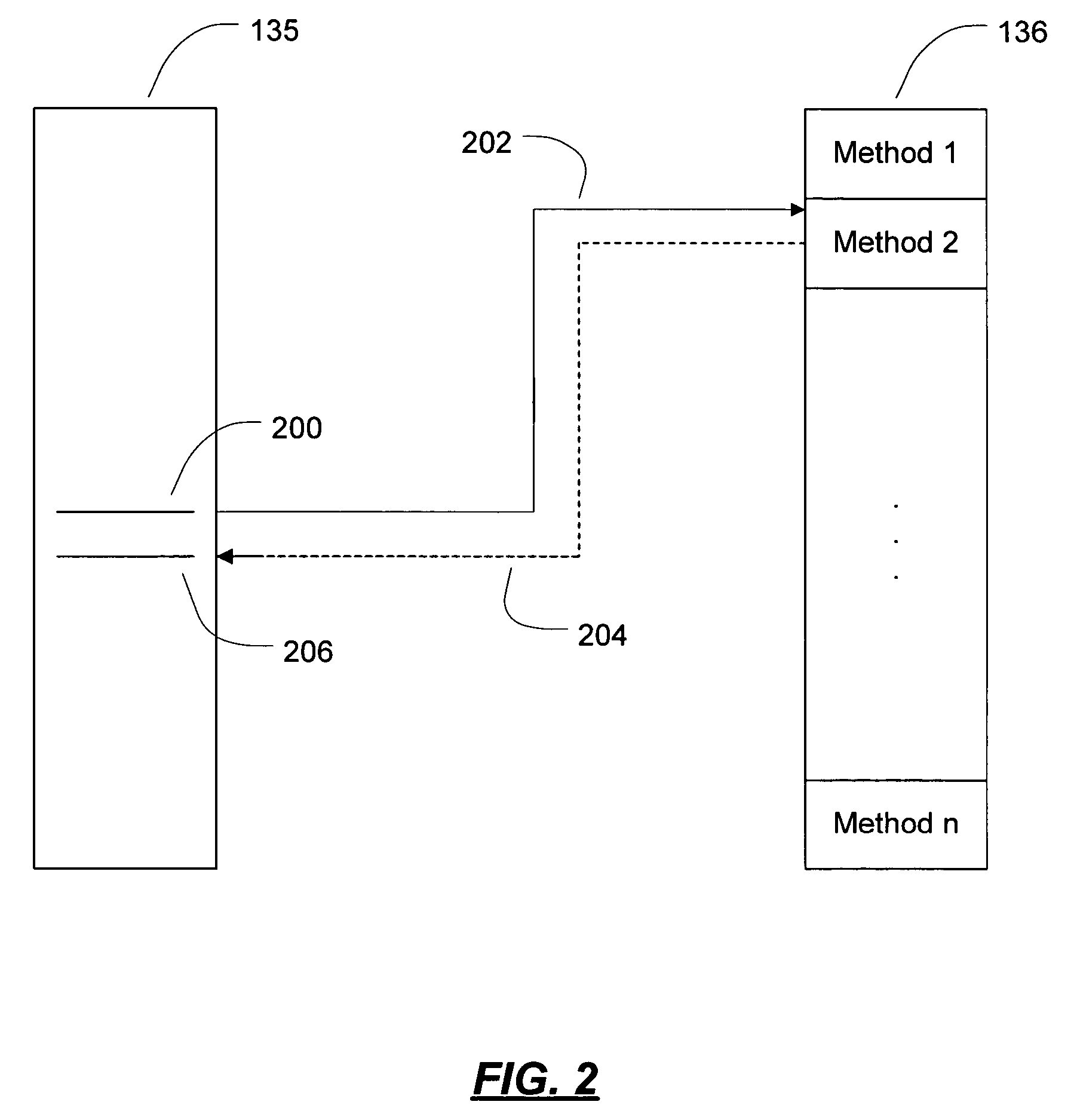Run-time call stack verification
a verification and call stack technology, applied in computing, instruments, electric digital data processing, etc., can solve problems such as security weakness that cannot be easily addressed by such techniques
- Summary
- Abstract
- Description
- Claims
- Application Information
AI Technical Summary
Benefits of technology
Problems solved by technology
Method used
Image
Examples
Embodiment Construction
Overview
[0020]There are some computer security models that depend on protecting a given code module from tampering or misuse. Many security technologies focus on detecting and preventing code tampering in order to prevent hackers from modifying a code module to perform an unintended function. However, it is also desirable to ensure that an unmodified code module is called only under legitimate circumstances. The present invention provides mechanisms that assist a code module in verifying the circumstances under which it has been invoked.
Exemplary Computing Arrangement
[0021]FIG. 1 shows an exemplary computing environment in which aspects of the invention may be implemented. The computing system environment 100 is only one example of a suitable computing environment and is not intended to suggest any limitation as to the scope of use or functionality of the invention. Neither should the computing environment 100 be interpreted as having any dependency or requirement relating to any on...
PUM
 Login to View More
Login to View More Abstract
Description
Claims
Application Information
 Login to View More
Login to View More - R&D
- Intellectual Property
- Life Sciences
- Materials
- Tech Scout
- Unparalleled Data Quality
- Higher Quality Content
- 60% Fewer Hallucinations
Browse by: Latest US Patents, China's latest patents, Technical Efficacy Thesaurus, Application Domain, Technology Topic, Popular Technical Reports.
© 2025 PatSnap. All rights reserved.Legal|Privacy policy|Modern Slavery Act Transparency Statement|Sitemap|About US| Contact US: help@patsnap.com



